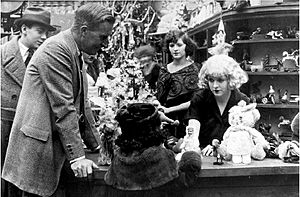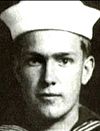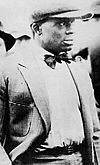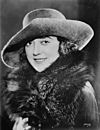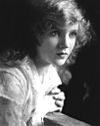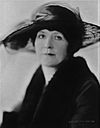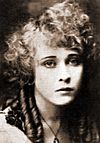William Desmond Taylor facts for kids
Quick facts for kids
William Desmond Taylor
|
|
|---|---|
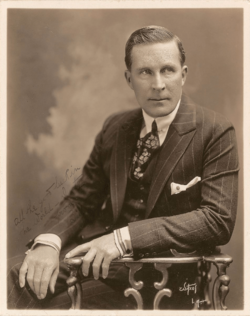
Taylor in 1917
|
|
| Born |
William Cunningham Deane-Tanner
26 April 1872 Carlow, County Carlow, Ireland
|
| Died | 1 February 1922 (aged 49) Los Angeles, California, U.S.
|
| Resting place | Hollywood Forever Cemetery |
| Nationality | Irish (1872–1890) American (1890–1922) |
| Occupation | Director, actor |
| Years active | 1913–1922 |
| Spouse(s) |
Ethel May Harrison
(m. 1901; div. 1912) |
| Partner(s) | Neva Gerber (1914–1919) |
| Children | 1 |
| Relatives | Denis Gage Deane-Tanner (brother) |
William Desmond Taylor was a famous film director and actor from the early days of Hollywood. He was born William Cunningham Deane-Tanner in Ireland on April 26, 1872. He directed 59 silent films and acted in 27 between 1913 and 1922.
Taylor became a very popular person in Hollywood. However, his life ended mysteriously on February 1, 1922, when he was murdered. His death, along with other big Hollywood scandals, caused a lot of excitement in newspapers. The case is still unsolved today.
Contents
Early Life and New Beginnings
William Cunningham Deane-Tanner grew up in Ireland. His family was part of the Anglo-Irish gentry. In 1891, he moved to Kansas in the United States. He had acted a little in school, and in the U.S., he started acting again. Eventually, he moved to New York City.
In New York, William met and married an actress named Ethel May Hamilton in 1901. They had a daughter named Ethel Daisy. The family was well-known in New York society.
However, on October 23, 1908, William suddenly disappeared. He left his wife and daughter. Friends said he had sometimes had "mental lapses" before. His family first thought he might have lost his memory. His wife divorced him in 1912.
After he disappeared, William traveled through Canada, Alaska, and the northwestern U.S. He worked in gold mining and with acting groups. He then changed his focus from acting to producing films. Around 1912, he arrived in San Francisco, California. By this time, he had changed his name to William Desmond Taylor. Friends from New York helped him get back on his feet in Los Angeles.
Hollywood Career
William Desmond Taylor started acting in films in 1913. He appeared in movies like The Counterfeiter. He also acted with actress Neva Gerber, and they were engaged for a while. Gerber later said he was a very honorable and cultured man.
Taylor began directing films in 1914. He directed The Judge's Wife and many other movies. He worked for several film companies, including Famous Players-Lasky.
Around 1915, Taylor reconnected with his sister-in-law, Ada Brennan Deane-Tanner. She was the wife of his younger brother, Denis, who had also disappeared years earlier. Ada and her daughters had moved to California for her health.
In 1918, during World War I, Taylor joined the Canadian army. He trained and then served in Europe. He was promoted to lieutenant and later major. After the war, he returned to Los Angeles in May 1919. The Motion Picture Directors Association honored him with a special dinner.
After his military service, Taylor directed some of the biggest stars of the time. These included Mary Pickford, Wallace Reid, and his young protégé, Mary Miles Minter. Minter starred in his 1919 film Anne of Green Gables.
By this time, Taylor's ex-wife and daughter knew he was working in Hollywood. In 1918, they saw him in a film. His ex-wife told their daughter, "That's your father!" His daughter, Ethel Daisy, wrote to him. In 1921, Taylor visited them in New York City. He made Ethel Daisy his legal heir, meaning she would inherit his money and property.

The Mystery of His Death
On the morning of February 2, 1922, William Desmond Taylor was found dead in his home in Los Angeles. He was found at 7:30 AM.
Funeral and Burial
Taylor's funeral was held on February 7, 1922, at St. Paul's Cathedral. He was buried in a mausoleum at Hollywood Cemetery, which is now called Hollywood Forever Cemetery. His tombstone reads, "In Memory of William C. Deane-Tanner, Beloved Father of Ethel Deane-Tanner. Died 1 February 1922."
Investigation Begins
When police found Taylor's body, they checked his pockets. He had $78 in cash, a silver cigarette case, a pocket watch, a small knife, and a locket with a picture of actress Mabel Normand. He also had a diamond ring on his finger. This showed that robbery was probably not the reason for his death. However, a large amount of cash Taylor had shown his accountant the day before was missing. Investigators determined Taylor died around 7:50 PM on February 1, 1922.
The case caused a huge media frenzy. Newspapers printed many sensational stories. The police were under pressure. One detective later said they were told to "lay off" the case, suggesting there might have been a cover-up.
People Connected to the Case
Many people were questioned or suspected in Taylor's murder.
Edward Sands
Edward Sands was Taylor's valet and cook. He had a history of crimes like stealing and faking documents. He had also left the military many times. Sands had worked for Taylor until seven months before the murder. While Taylor was in Europe in 1921, Sands had faked his signature on checks and damaged his car. Sands also broke into Taylor's home. After the murder, Edward Sands was never seen again.
Henry Peavey
Henry Peavey was Taylor's new valet. He was the person who found Taylor's body. Newspapers noted that Peavey wore fancy golf clothes but did not own golf clubs. Peavey died in a San Francisco asylum in 1931.
Mabel Normand
Mabel Normand was a very popular comedic actress. She often worked with Charlie Chaplin. Taylor was said to be deeply in love with her.
Mabel Normand said she left Taylor's home at 7:45 PM on the night of the murder. She was happy and carrying a book he had lent her. She was the last person known to have seen Taylor alive. The police questioned her for a long time but decided she was not a suspect. Normand continued to make films. She died eight years later in 1930. Before she died, she reportedly asked a friend, "Julia, do you think they'll ever find out who killed Bill Taylor?"
Faith Cole MacLean
Faith Cole MacLean was Taylor's neighbor. She was the wife of actor Douglas MacLean. Many believe she saw Taylor's killer. She heard a loud noise at 8 PM. When she opened her door, she saw someone leaving Taylor's home. She said they were dressed "like my idea of a motion picture burglar." This person paused, went back inside briefly, then came out again, smiled at her, and ran off. MacLean thought the loud noise was a car backfiring, not a gunshot. She also thought the person might have been a woman dressed as a man because of their height and build.
Mary Miles Minter
Mary Miles Minter was a young actress who had been a child star. Taylor had helped guide her career. She was only three years older than Taylor's daughter, whom he had left in New York.
Charlotte Shelby
Charlotte Shelby was Mary Miles Minter's mother. She was known for being very controlling and focused on her daughter's career and money. Minter and her mother had many disagreements about money.
Shelby's first statements to the police about the murder were seen as dishonest. She seemed to be lying about her daughter's relationship with Taylor and other things. A key piece of evidence was that Shelby reportedly owned a rare .38 caliber pistol and unusual bullets. These were very similar to the type used to kill Taylor. After this information became public, she supposedly threw the pistol into a swamp in Louisiana.
Shelby knew the Los Angeles district attorney. She spent years outside the United States to avoid questions from police and the press. In 1938, her other daughter, Margaret Shelby, openly accused her mother of the murder. Many people suspected Charlotte Shelby. She was a favorite suspect for many writers.
Even though Shelby feared being tried for the murder, two Los Angeles County district attorneys decided not to charge her. They said there wasn't enough evidence. Shelby died in 1957.
Margaret Gibson
Margaret Gibson was an actress who had worked with Taylor when he first came to Hollywood. She was arrested and jailed on charges of trying to get money by threats in 1923, but the charges were dropped. She was in Los Angeles when Taylor was murdered. Her name was not mentioned in the original investigation. Soon after the murder, Gibson got work in several films from Taylor's studio, Famous Players-Lasky. Shortly before she died in 1964, Gibson reportedly confessed to murdering Taylor.
Missing Evidence
Sadly, much of the physical evidence from the crime scene was lost right away. More evidence disappeared over the years. This was due to poor handling of the crime scene and possible corruption. While many theories have been suggested, and many books written, no clear evidence has ever been found to prove who killed William Desmond Taylor.
What Happened Next
The Taylor murder case was very important because so many famous people were involved. It was the first American murder case where so many people felt personally interested. News stories about Taylor's murder sold more newspapers in the United States than ever before.
Newspapers often described Taylor as a clever villain who "got what was coming to him." They urged law enforcement to find the truth.
The early 1920s saw many Hollywood scandals, including Taylor's murder, the Roscoe Arbuckle trial, and the deaths of other stars. These events made Hollywood studios start adding "morality clauses" to their contracts. These clauses allowed studios to fire actors or directors who behaved badly.
Images for kids
-
Taylor in a 1920 photograph addressed to actress Mary Miles Minter
See also
 In Spanish: William Desmond Taylor para niños
In Spanish: William Desmond Taylor para niños
- List of unsolved murders


